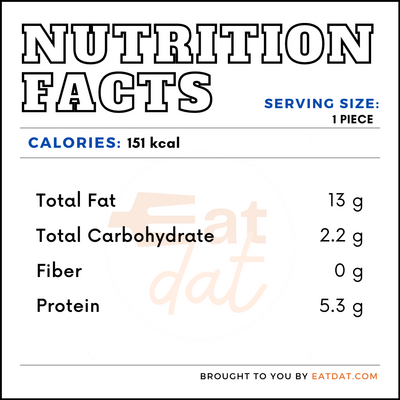
Sausage
What is a Sausage?
Sausage is a meat product made from ground meat, spices, herbs, salt, and other seasonings. The meats used in this dish are usually beef or pork but other types of meat may also be used in different parts of the world.
- Originally, it was conceived as a preservation technique for meats but has now become a delicacy and a dish on its own.
- The techniques used in its preparation include curing, drying, smoking, or freezing.
The main types of sausages around the world are:
- Andouille (France)
- Bratwurst (Germany)
- Chorizo (Spain)
- Salsiccia (Italy)
- Chorizo (Mexico)
- Longaniza (Argentina)
- Sai Ua (Thailand)
- Longganisa (Philippines)
- Laulau (Hawaii)
- Cajun (USA)
- Breakfast (USA)
Origin of sausage
This dish was originally created because of the need to preserve meat before refrigeration facilities were available. Often lesser cuts of meat were preserved using this method. This meat product has been around for 2,500 years. The first reference to it is found in Homer’s Odyssey. Also, there was a popular Greek play called ‘The Sausage’ in 500 BC. Additionally, ancient Romans ate them frequently and they are mentioned as a delicacy in a 1 AD cookbook called Apicius’s De re coquinaria.
This dish has even figured in the history of the Catholic Church and was banned in 4 AD because of its association with pagan festivals. Not to mention, it sparked off the Reformation in Switzerland when Zwingli and his friends ate them during Lent, and were subsequently arrested. Today, there are hundreds of different varieties around the world.
Nutrition
Nutritional profile for a beef frankfurter sausage (1 piece):

In addition, this meat product also contains essential micronutrients such as calcium, magnesium, phosphorus, potassium, sodium, and essential fatty acids. It is a good source of protein and contains all the essential amino acids required by the human body. Also, they are a great source of vitamins such as B12, B6, and C, as well as iron, and zinc. B12 keeps the nervous system functioning and zinc is useful to build immunity. Furthermore, iron is essential for making hemoglobin and carrying oxygen. The glycemic index of this meat product is quite low, and hence, can be included by diabetics in their diet.
However, they contain high fat and sodium content, which may lead to health issues such as cardiovascular diseases, obesity, high blood pressure, and some types of cancer.
Commercial production
Sausages are commercially made by mixing seasonings with coarse or finely ground meat and stuffing the whole into casings, wrapped as a bulk package, or pressed into patty form. Smoked varieties are made by cooking or smoking the casings. Cooked varieties, such as frankfurters, are made from fresh meat and cured, cooked, and then packaged as a ready-to-eat food. Other varieties of this dish are dry, fermented, semi-dry, and mold ripened.
Sausage recipes
This dish is a tasty option that can help fulfill the daily protein requirement in your diet. Here are a few dishes that can be prepared with it:
- Herbed Lentils
- Beer Braised Sauerkraut and Bratwurst
- Jambalaya
- Sausage and Rice Skillet
- Sai Ua Samun Phrai
- Longsilog
- Chinese Fried Rice
- Penang Loh Bak
- Grilled Boerewors
- Merguez and Vegetable Tagine
- Salchipapas
- Pique Macho
- Cassoulet
FDA regulations
The Food Safety and Inspection Service (FSIS) of the U.S. Department of Agriculture (USDA) is responsible for the regulation of meat and poultry. The USDA defines fresh sausage as a coarse or finely comminuted meat food product prepared from one or more kinds of meat, or meat and meat byproducts, containing no more water than 3 percent of the product. Cooked and smoked varieties are defined as sausages made from one or more different kinds of chopped or ground meats which have been seasoned, cooked and/or smoked.
References
Sausage House, History of Sausages, http://sausagehouse.in/history-of-sausages/
Anand Mohan, Ph.D. Assistant Professor and Food Science Extension Meats Specialist, Basics of Sausage Making: Formulation, Processing & Safety, UGA Extension, https://secure.caes.uga.edu/extension/publications/files/pdf/B%201437_1.PDF
Carballo, Javier. “Sausages: Nutrition, Safety, Processing and Quality Improvement.” Foods (Basel, Switzerland) vol. 10,4 890. 19 Apr. 2021, doi:10.3390/foods10040890, https://www.ncbi.nlm.nih.gov/pmc/articles/PMC8073304/
Murphy, Karen J et al. “Effects of eating fresh lean pork on cardiometabolic health parameters.” Nutrients vol. 4,7 (2012): 711-23. doi:10.3390/nu4070711, https://pubmed.ncbi.nlm.nih.gov/22852059/
